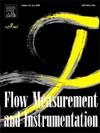Numerical investigation on vortex characteristics inside a jet pump under low entrainment ratio conditions
IF 2.3
3区 工程技术
Q2 ENGINEERING, MECHANICAL
引用次数: 0
Abstract
The entrainment ratio is a crucial parameter affecting jet pump performance and efficiency. A low entrainment ratio induces chaotic flow patterns within the pump, leading to reduced efficiency. Understanding these chaotic flow patterns is essential for optimizing jet pump design and operation. In this study, the mesh was optimized for low entrainment ratio conditions, and the internal flow field of the jet pump was simulated. The results revealed the presence of multiple vortices between the shear layer and the pump wall under low entrainment ratio conditions. These vortices were classified into primary and secondary vortices based on their size. Secondary vortices have a negligible effect on pump performance, while primary vortices facilitate energy transfer by supporting the shear layer when it cannot fully extend to the wall. However, primary vortices also cause irreversible energy losses and elevate frictional resistance along the inner wall, leading to a decrease in efficiency. Using a working fluid with a lower viscosity but similar density results in a minor efficiency improvement. Strategies such as increasing the entrainment ratio, optimizing the area ratio, adjusting the nozzle exit position, and using a converging throat effectively reduced the primary vortex size and improved jet pump efficiency.
低夹带比条件下射流泵内涡特性的数值研究
吸入比是影响喷射泵性能和效率的重要参数。低夹带比会引起泵内的混乱流动模式,导致效率降低。了解这些混沌流动模式对于优化喷射泵的设计和运行至关重要。在本研究中,优化了低夹带比条件下的网格,并对喷射泵内部流场进行了模拟。结果表明,在低夹带比条件下,剪切层与泵壁之间存在多个涡。根据涡旋的大小将其分为初级涡旋和次级涡旋。次级涡对泵性能的影响可以忽略不计,而当剪切层不能完全延伸到壁面时,初级涡通过支持剪切层来促进能量传递。然而,初级涡也会造成不可逆的能量损失,并增加沿内壁的摩擦阻力,导致效率下降。使用粘度较低但密度相似的工质,效率略有提高。通过增加引流比、优化面积比、调整喷嘴出口位置、采用会聚喉道等策略,有效减小了一次涡大小,提高了喷射泵效率。
本文章由计算机程序翻译,如有差异,请以英文原文为准。
求助全文
约1分钟内获得全文
求助全文
来源期刊

Flow Measurement and Instrumentation
工程技术-工程:机械
CiteScore
4.30
自引率
13.60%
发文量
123
审稿时长
6 months
期刊介绍:
Flow Measurement and Instrumentation is dedicated to disseminating the latest research results on all aspects of flow measurement, in both closed conduits and open channels. The design of flow measurement systems involves a wide variety of multidisciplinary activities including modelling the flow sensor, the fluid flow and the sensor/fluid interactions through the use of computation techniques; the development of advanced transducer systems and their associated signal processing and the laboratory and field assessment of the overall system under ideal and disturbed conditions.
FMI is the essential forum for critical information exchange, and contributions are particularly encouraged in the following areas of interest:
Modelling: the application of mathematical and computational modelling to the interaction of fluid dynamics with flowmeters, including flowmeter behaviour, improved flowmeter design and installation problems. Application of CAD/CAE techniques to flowmeter modelling are eligible.
Design and development: the detailed design of the flowmeter head and/or signal processing aspects of novel flowmeters. Emphasis is given to papers identifying new sensor configurations, multisensor flow measurement systems, non-intrusive flow metering techniques and the application of microelectronic techniques in smart or intelligent systems.
Calibration techniques: including descriptions of new or existing calibration facilities and techniques, calibration data from different flowmeter types, and calibration intercomparison data from different laboratories.
Installation effect data: dealing with the effects of non-ideal flow conditions on flowmeters. Papers combining a theoretical understanding of flowmeter behaviour with experimental work are particularly welcome.
 求助内容:
求助内容: 应助结果提醒方式:
应助结果提醒方式:


